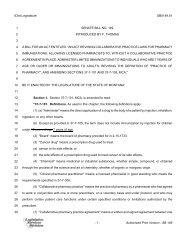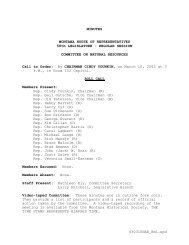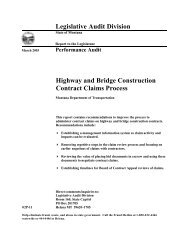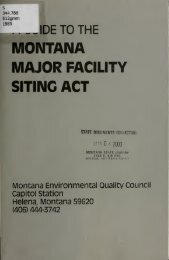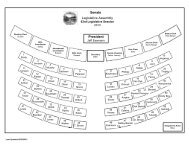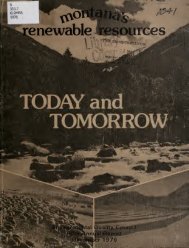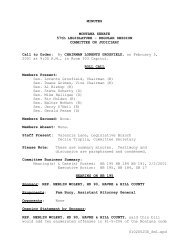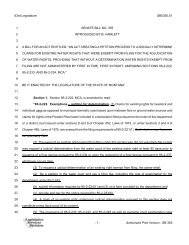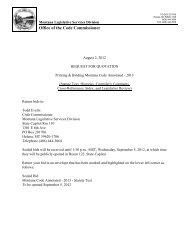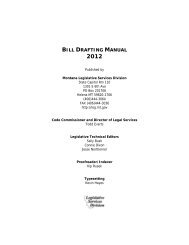Public Comment. Volume III - Montana Legislature
Public Comment. Volume III - Montana Legislature
Public Comment. Volume III - Montana Legislature
You also want an ePaper? Increase the reach of your titles
YUMPU automatically turns print PDFs into web optimized ePapers that Google loves.
Bobbi Keeler, FA Coordinator 2<br />
EWP needs to identify the Federal Aid assets involved before this<br />
can be answered. Hopefully, the easement could be routed to avoid<br />
impacting ponds, nursery facilities, pumps and water distribution<br />
systems, infrastructures etc, that have had Federal Aid funding.<br />
If so, the only mitigation needed would be for lands that may have<br />
some incidental wildlife value. The State would have to receive<br />
fair market value for the easement or the mitigation package would<br />
have to be of the same or higher value. If Federal Aid facilities<br />
are physically altered or the functionality impaired, the<br />
mitigation package would need to include measures to restore the<br />
function and purpose of the facility or structure. Otherwise,<br />
compensation would be required. It is assumed that the Federal<br />
Aid facilities are directly (e.g. rearing ponds) or indirectly<br />
(e.g. housing) necessazy to sustain the production capabilities of<br />
the hatchery. Any impacts to existing facilities, without<br />
replacement, would result in decreased production or, perhaps,<br />
require significant changes in operations to maintain fish<br />
production levels. Maintaining capabilities to operate the<br />
hatchery in an effective and efficient manner must be critically<br />
considered in a mitigation package and the way in which the<br />
easement is written. Also, in this regards, the indirect impacts<br />
of the easement on facilities (e.g. vibration, runoff from rightof-way,<br />
etc.) need to be fully covered in the easement document.<br />
J Ja<br />
es in<br />
A 0' 0<br />
o ' a 'ons siabilities der the<br />
Federal Aid Promam?<br />
There are a number of scenarios. The basic obligations and/or<br />
liabilities are addressed in the first two questions. If O&M<br />
costs are expected to rise as a result'of the easement this should<br />
be included as part of the mitigation package. It is critical<br />
that the potential indirect impacts (vibration etc.) be fully<br />
considered and mitigation for these impacts be included as part of<br />
the easement agreement. Federal Aid could not participate in<br />
additional OCM costs resulting from any problems associated with<br />
the easement or use of the right-of-way.<br />
The degree of impact to operations would be a concern if Federal<br />
Aid funds continue to be used to operate and maintain the<br />
hatchery. The facility must continue to remain functional, meet<br />
production goals, and be cost effective.<br />
Is there anv ad-txonal<br />
. .<br />
ad vice vou would aive to our aaency as we<br />
face a s situation?<br />
Perhaps of most concern are impacts that are not fully<br />
anticipated. Effects of long term vibration on pipelines, local<br />
geology, water quality (from runoff-herbicides etc.) that could<br />
impact the future operations of the hatchery or result in<br />
significant costs to correct. This should be fully covered in the<br />
easement document to ensure FWP is not responsible for the<br />
additional costs. Would subtle vibration affect egg vitality or<br />
other critical life stage?<br />
EQC Eminent Domain Study -245-



